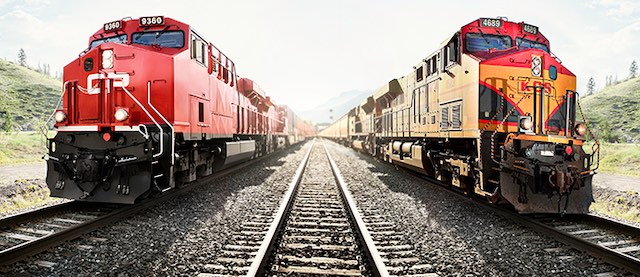There was a time when every region and almost every major city in the country was served by at least three major railroads. The Northeast had Erie, Lackawanna, New York Central, and Pennsylvania, among others. The Southeast had Atlantic Coast Line, Seaboard, and Southern. The Midwest had the Burlington, Chicago & North Western, Milwaukee, and Rock Island. The Northwest had the Great Northern, Milwaukee Road, and Northern Pacific. The Southwest had Santa Fe, Southern Pacific, and Union Pacific.
Canadian Pacific and Kansas City Southern meet at only one point, so a merger between them preserves competition. Kansas City Southern photo.
Then came the merger movements of the 1960s, 1970s, and 1980s, and now we are down to just seven class 1 railroads: two in the East, two in the West, two in Canada making various incursions into the United States, and Kansas City Southern, which connects Missouri with Texas, Louisiana, Mississippi, and Mexico. Continue reading









